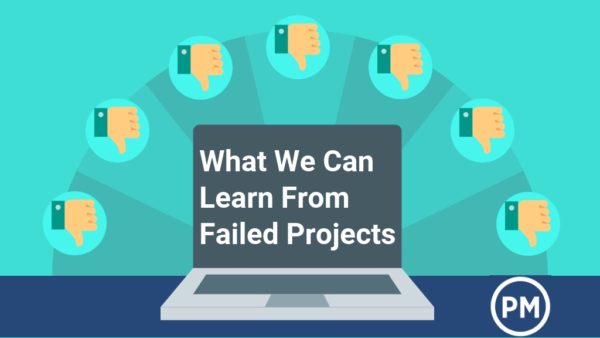
28 Feb 10 Project Failures and the Lessons Learned

Pinto and Mantel (1990) describe the attempt to gain a more complete understanding of the causes of project failure has been a difficult task for both academic researchers and practitioners. First, the concept of project failure is nebulous. Few people agree on exactly how to define project failure. However, in his research Dunbar (2016) states that the Project Management Failures-Standish Chaos reports (1994-2015) concludes that ‘over the last 20 years the project management field has experienced increasing layers of project management processes, tools, governance, compliance and oversight. Yet these activities and products have done nothing to improve project success rates.
The Major Projects Association (MPA) in the United Kingdom industry research on “Why do projects fail “identified the following findings:
- Poor project definition
- Unclear objectives
- Unrealistic targets
- Inadequate risk evaluation
- Clients inexperience
- Poor forecasting of demand
Examples of Project Failures and Lessons Learned
1.Dyson Electric Car
Development of an electric car Project name: The Dyson Date: Oct 2019 Cost: £500M Synopsis: The future of transportation is here to see and it is of course electric! As a result, the development of electric cars has been a growth area for the past ten years and the pace of change continues to grow.
Contributing factors: Lack of upfront due diligence (failure to analyze costs, market competitive landscape, market size, production costs and profit margins). Underestimation of costs. Perfectionism. Focal imbalance (focusing on the product rather than full spectrum of work need to launch a car brand).
2.Great Western Mainline Electrification
UK Project type: Rail infrastructure upgrade Project name: Great Western Mainline electrification project Date: Jan 2020 Cost: £2B cost overrun, plus reduced scope Synopsis : The electrification of the world’s transportation infrastructure is a growing focus in many countries. Electrification allows the energy intensive industry to move to renewable sources of energy and helps contribute to climate action goals.
Contributing factors: Underestimation of complexity. Inadequate planning. Lack of due diligence in estimating. Lack of appropriate Project Management controls, checks and balances.
3.Police Scotland
UK Project type: Policing information management system Project name : i6 Date : Mar 2017 Cost : £200m lost opportunity Synopsis : While I often write about the direct impacts failed projects have on an organization it is also worth remember that each failed project is an investment that failed to yield its intended benefits. The loss of those benefits (the ‘benefits shortfall’ cost) is often a far larger impact than the direct impact of the failed project itself.
Contributing factors: Failure to prototype and maintain regular visibility into the design. Underestimation of complexity. Requirements management failures.
4.World Athletics Championships 2019
Earlier this year, the best athletes in the world flocked to Doha for the World Athletics Championships. They were forced to compete in eerily silent stadiums as the host nation had failed to sell even a fraction of the tickets. The International Association of Athletics Federations has been criticised for placing money before the needs of the sport in what has been a very damaging blow to their public image.
Hopefully, lessons have been learned from this instance. It doesn’t matter how much money a host nation is willing to throw at an event, if there isn’t a homegrown fan base, then they will struggle to fill the seats and provide a memorable experience.
5.The Garden Bridge
The Garden Bridge has been dubbed a failed vanity project, pushed by Boris Johnson when her was the Mayor of London. The project cost £53m in total, despite never actually being built. According to a report, the bridge was over-optimistic both in terms of the fundraising possible and the final cost. This led to a shortfall which could never be overcome, despite surveying work on the riverbed already getting underway.
Ambition is a powerful thing, but it needs to be grounded in reality, particularly when relying on fundraising to get projects off the ground. In retrospect, it would have been wise to establish if the project was feasible before spending £161,000 for a website.
6.The NHS’ Civilian IT Project
The project that aimed to revolutionise the NHS IT systems was a failure that cost the taxpayer somewhere in the region of £10bn. The politically-motivated and top-down nature of the project meant that scope creep and a complete underestimation of the requirements doomed this project from the start.
The government was later criticised for its inability to handle large IT contracts. From this, we can learn that it’s important to consider the size and capabilities of your own organisation before taking on an ambitious project.
7.Waterworld
When shooting started for the film Waterworld, the director didn’t yet hold a finalised script. But this wasn’t the only problem to plague the shoot. The project was scheduled for 96 days of shooting, but multiple rewrites led to multiple re-shoots and this time frame was stretched out to 150 days. Making movies isn’t cheap, so this pushed production costs to $135 million over budget.
Controlling the scope of a project is essential, but this can’t be done without a proper plan in place. In the case of a movie, this means signing off the script before shooting can begin.
8.Denver International Airport
Denver International Airport set out to create the most sophisticated luggage handling systems in the world. The project was soon deemed to be far more complex than anyone was anticipating and delayed for 16 months at a cost of $560 million. Large portions of the project had to be “redone” and the project was then scrapped in 2005.
This is a classic example of failing to understand the scope of the project. Ambition can often cloud judgement, and the desire to create something that has never been done before can lead people to push ahead with projects.
9.McDonald’s Arch Deluxe Burger
McDonald’s put more than $150 million into advertising—more than it had ever spent on an ad campaign—for its new Arch Deluxe Burger, only to find out its customers weren’t interested in the more grown-up, sophisticated menu option.
Lessons Learned: This is another case that highlights the importance of letting customer data drive product strategy. If McDonald’s had a more accurate picture of what its customers wanted, it could have saved millions in advertising and resources. A great way to stay on top of data is to choose a handful of key metrics to track, make sure your tools can accurately track them in as close to real time as possible, and then always strategize based on the numbers.
10.Crystal Pepsi
Crystal Pepsi was a hit at first, and people were excited about the new version of an old favourite. But people soon lost interest and the novelty wore off, making it impossible for Crystal Pepsi to gain a strong market share.
David Novak was the COO of PepsiCo during the project and didn’t listen when bottlers told him the Crystal Pepsi flavour wasn’t quite right. “I learned there that you have to recognize that when people are bringing up issues, they might be right”
References
Friel, P.G. (2017) “Project Manager Perceptions of the Value of Organizational Project Management” Dissertation National College of Ireland Dublin Ireland.
https://calleam.com/WTPF/?tag=examples-of-failed-projects
https://www.workfront.com/blog/project-failure-10-famous-failures-and-5-ways-to-spot-them-before-they-happen
https://pm360consulting.ie/blog
https:// majorprojects.org/mpa-blog
